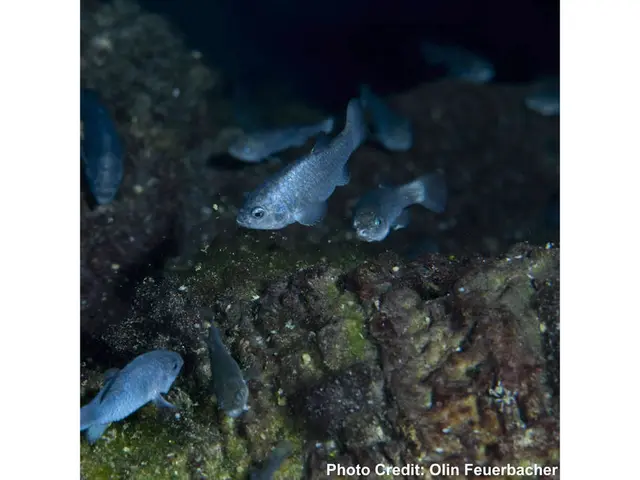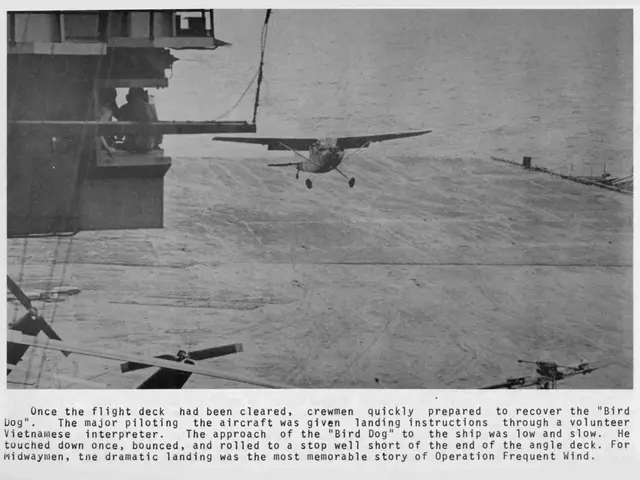Aircraft Ice Avoidance and Removal Methods Instructions
Flying Through a Winter Wonderland: De-Icing and Anti-Icing Procedures
Air travel isn't just about soaring through the skies, but also tackling Mother Nature's challenges. From rain to snow, fog, and even lightning, aircrafts face various weather conditions. Occasionally, they even deal with freezing temperatures that may lead to an unwanted frosty exterior - enter de-icing and anti-icing procedures.
Dicing with Danger: De-Icing vs. Anti-Icing
De-Icing: Think of it as a winter car wash for the skies. If ice, snow, or frost has already formed on the exterior surfaces of the aircraft, heated de-icing fluids are sprayed under pressure to melt and clean them away, restoring the aircraft's aerodynamic properties.
Anti-Icing: A preventive measure to stop ice from forming in the first place. Anti-icing fluids are applied to create a protective layer, preventing ice accumulation during operations.
Frostbite Flight Conditions
When temperatures dip around the freezing mark or during snowfall, slush, or freezing fog, these procedures are essential for maintaining safe operations. These conditions can severely impact an aircraft's performance, and those de-icing and anti-icing are the unsung heroes of winter flying.
The Brrr-illiant Cold Soak Effect
An interesting phenomenon called the "Cold Soak Effect" can turn aircraft wings into crystal palaces. This occurs when aircrafts descend from high altitudes or refuel with cold fuel, causing wing surfaces to cool significantly. Even in temperatures between 0°C and 15°C, moisture can freeze upon contact with these chilly surfaces, requiring de-icing procedures.
Captain, My Captain
The pilot, or more specifically, the captain, takes the reins when it comes to deciding whether de-icing or anti-icing is required. They assess the current weather conditions and the aircraft's state to ensure safety without unnecessary delays.
Green but Not So Clean: Anti-Icing Fluids
Anti-icing fluids, often green and thick, create a barrier that stops snow and slush from adhering. But these chemicals can harm the environment. They're toxic to humans and wildlife, and improper disposal can lead to air quality degradation and soil contamination.
The Holdover Time (HOT) Debate
HOT stands for the duration a anti-icing fluid remains effective. Factors such as fluid type, weather conditions, and precipitation intensity influence HOT. Aviation authorities like the FAA and Transport Canada provide HOT guidelines to assist flight crews.
De-Icing Stations: Taking Flight
De-icing operations usually take place in designated areas at airports, near runway thresholds to reduce taxi time post-treatment. Some airports prioritize environmental considerations, restricting these operations at terminal gates to prevent pollution.
Environmental Concerns: A Catch-22
While de-icing and anti-icing procedures are crucial for flight safety, they can have detrimental impacts on the environment. These substances have been linked to groundwater and surface water pollution, air quality degradation, and soil contamination. Climate change also contributes to these effects by increasing the frequency of extreme weather events.
Paving the Way to a Greener Sky
Regulations and sustainable practices are key to mitigating environmental impacts. Recycling and reuse solutions, research collaborations, and innovative treatments are some strategies airports and regulatory bodies are adopting to ensure sustainable airport operations. As aviation grapples with the impacts of climate change, the future lies in adapting to these challenges while minimizing harm to our planet.
Remember, no flight is too short to ensure safety or too long to consider the environment. Let's keep our skies clear, our runways clean, and our planet green.
For more articles, click here.
In the aviation industry, flight safety is paramount, especially during winter conditions when de-icing and anti-icing procedures are essential for maintaining safe operations.
These procedures are crucial for dealing with ice, snow, or frost that may form on the exterior surfaces of the aircraft, as well as for preventing ice accumulation during operations.
The use of de-icing and anti-icing fluids can have environmental implications, with potential harm to human health, wildlife, and air and soil quality. Therefore, it's important for the aviation industry to adopt sustainable practices and regulations to minimize these impacts.








